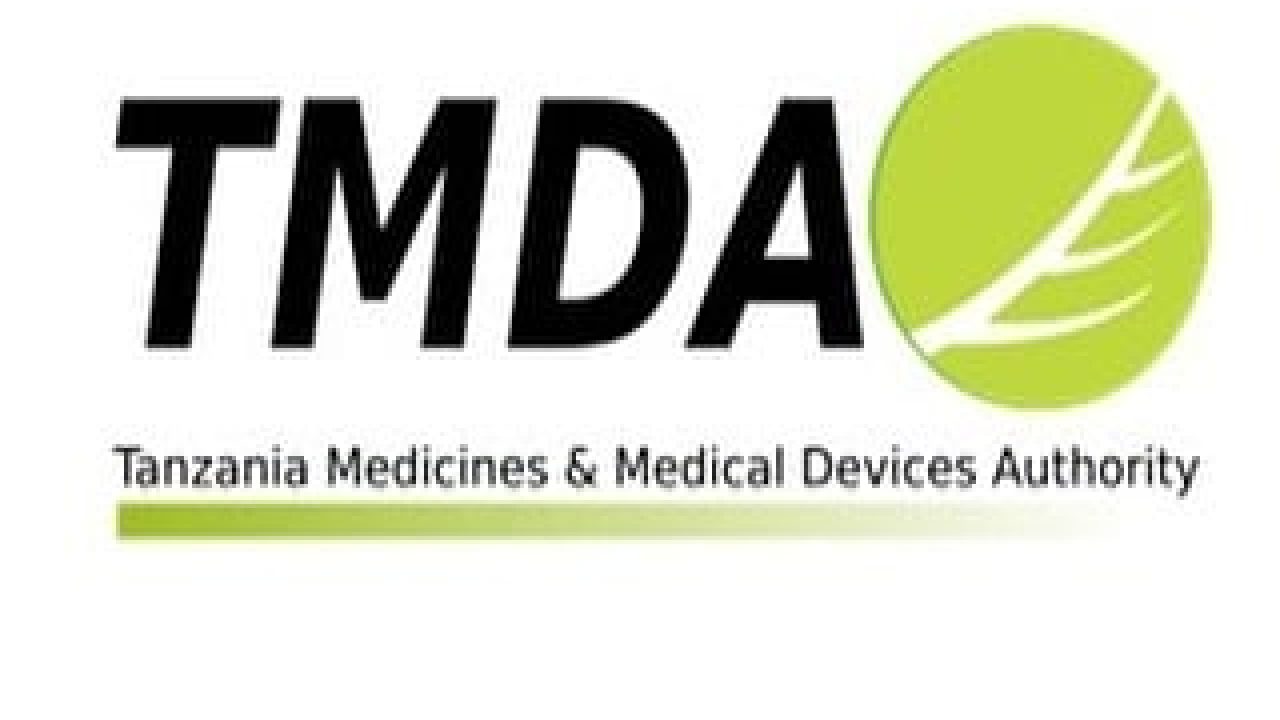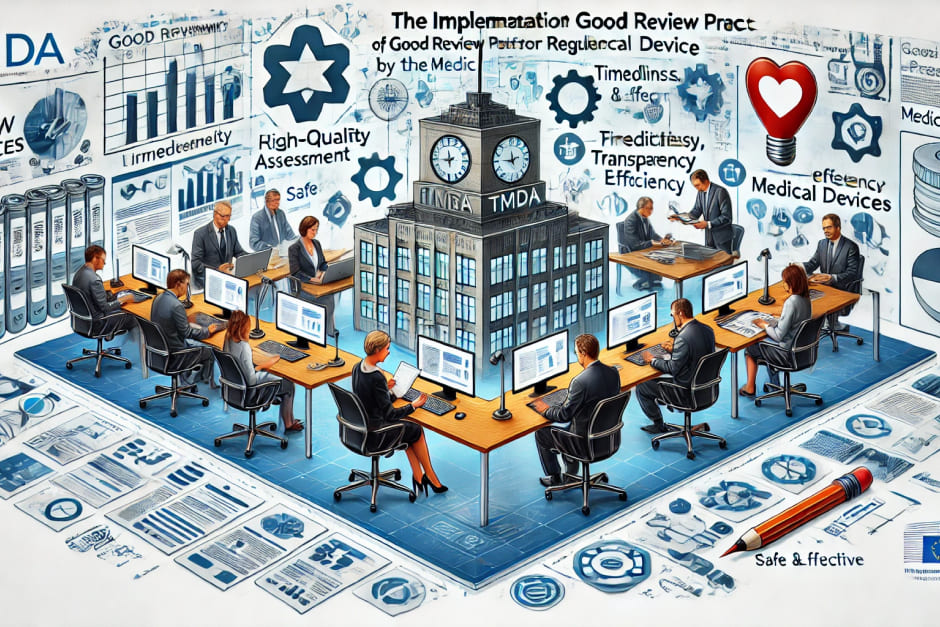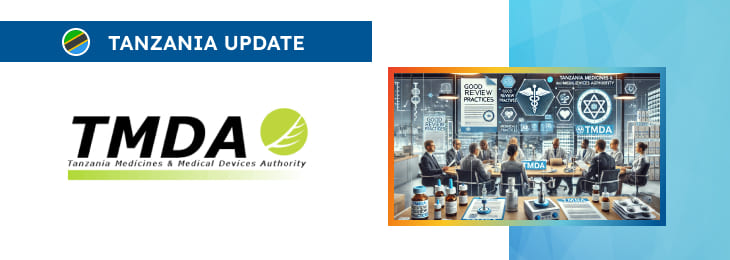The new article explains in detail the way the relevant principles and practices should be implemented in order to ensure the safety and proper performance of medical devices allowed for marketing and use in the country.

Table of content
The Tanzania Medicines and Medical Devices Authority (TMDA), a country’s regulatory agency in the sphere of healthcare products, has published a guidance document dedicated to good review practices for the regulation of medical devices. The document provides an overview of the existing legal framework, as well as additional clarifications and recommendations to be taken into consideration by the parties involved in order to ensure compliance with the relevant regulatory requirements.
At the same time, the authority reserves the right to make changes to the guidelines and recommendations provided therein, should it be reasonably necessary to reflect corresponding amendments to the underlying legislation or changes to the respective principles.
Overview of GRevP Implementation
According to the document, the implementation of Good Review Practices (GRevP) by the TMDA is essential for achieving timeliness, predictability, transparency, and efficiency in regulatory assessments for medical devices. GRevP is an integral part of TMDA’s approach to ensure consistent and high-quality reviews, underpinned by rigorous standards that contribute to timely access to safe and effective medical devices.
Key elements of the implementation include the use of standardized assessment tools and comprehensive learning resources to support evaluators in the regulatory process. The Authority has developed and implemented various tools, such as regulatory procedure guidelines, standardized templates, and operating procedures, to guide assessors throughout the assessment process.
By employing these tools, TMDA enhances both the efficiency and transparency of medical device evaluations, thus facilitating predictable outcomes and clearer communications with stakeholders.

Core Values Underpinning GRevP
The GRevP guidelines align with TMDA’s core values, ensuring that every assessment and review is conducted with a focus on the following principles:
- Teamwork: In evaluating and registering medicines, TMDA collaborates across different sections, including Communications and Public Education, ICT, Inspectorate, and Laboratory Services. This inter-departmental collaboration ensures that public access to quality medical devices is timely and reliable.
- Integrity: Personnel involved in reviews and evaluations are committed to the highest standards, ensuring that they act in the best interests of public health.
- Customer Focus: GRevP emphasizes responsiveness to customers’ needs, directing evaluators to prioritize customer expectations throughout the review process.
- Transparency: TMDA maintains openness by providing stakeholders access to relevant publications (e.g., regulations guidelines) and adhering to a Client Service Charter to ensure that communications and decisions are transparent and timely.
- Accountability: The Authority’s responsibilities in regulatory processes are clearly outlined in regulations, reinforcing accountability for providing timely access to safe medical devices.
- Quality: Quality control is consistently applied at each step of the marketing authorization process, ensuring evaluations meet stringent quality standards and adhere to GRevP guidelines.
- Creativity: TMDA fosters an environment where innovative approaches are encouraged, aiming to provide efficient services to stakeholders without compromising the quality or integrity of the review process.
These core values serve as guiding principles, ensuring that each aspect of the review process aligns with TMDA’s commitment to excellence and public service.
Principles of a Good Review
As further explained in the document, the foundation of GRevP lies in ten essential principles, each contributing to a robust review system that is evidence-based, thorough, and consistently aligned with regulatory and scientific standards.
These principles include:
- Balanced: A good review is objective, ensuring assessments are conducted without bias to produce fair and reliable outcomes.
- Considers Context: Reviewers consider the proposed conditions of device use and storage, analyzing the data within the broader context of regulatory and user environments, which may involve perspectives from healthcare providers and international regulatory agencies.
- Evidence-Based: An evidence-based review incorporates the latest scientific advancements and regulatory standards, ensuring assessments are grounded in current knowledge and legislation.
- Identifies Signals: A thorough review flags potential issues and concerns raised by both the applicant and reviewers, identifying early signals that may require further investigation.
- Investigates and Solves Problems: A problem-solving approach is central to GRevP, allowing reviewers to explore and address key scientific data, apply regulatory flexibility, and recommend solutions to address complex regulatory challenges.
- Makes Linkages: Effective review integrates various application components—preclinical, clinical, and manufacturing data, as well as risk management plans. Regular communication between applicants, internal stakeholders, and experts helps to consolidate these linkages for a comprehensive assessment.
- Thorough: Ensuring follow-through on all identified issues, reviewers provide a detailed examination that captures all relevant factors and considerations.
- Utilizes Critical Analyses: This principle emphasizes critical evaluation of data integrity, relevance, and completeness, ensuring that the application’s scientific basis aligns with proposed product labeling and use.
- Well-Documented: GRevP mandates thorough documentation, producing clear and concise reports that outline evidence-based findings, recommendations, and final conclusions. This documentation supports transparency and accountability, as reports should withstand scrutiny by stakeholders.
- Well-Managed: A good review is structured around project and quality management practices, with clearly defined steps, specific activities, and targets to ensure consistent progress and completion within stipulated timelines.
Together, these principles provide a structured and quality-driven approach to medical device reviews, supporting TMDA’s mission to maintain high standards in regulatory practices.
Conclusion
In summary, the implementation of Good Review Practices within TMDA signifies a commitment to achieving excellence in medical device regulation. By embedding GRevP principles into every stage of the review process, TMDA ensures transparency, efficiency, and accountability in its regulatory activities. Core values such as teamwork, integrity, and customer focus support a framework where the highest standards are consistently applied to every evaluation. The foundational principles of GRevP – including evidence-based practices, well-documented procedures, and critical analyses – serve to enhance the reliability and quality of regulatory reviews.
TMDA’s approach to GRevP reflects a commitment to continuous improvement, anticipating future updates to the guidelines as regulatory environments evolve and stakeholder feedback contributes to enhancing regulatory processes, establishing the proper balance between creating a favorable environment for the development of novel medical devices employing innovative technologies and ensuring safety of patients.
How Can RegDesk Help?
RegDesk is an AI-powered Regulatory Information Management System that provides medical device companies with regulatory intelligence for over 120 markets worldwide. It can help you prepare and publish global applications, manage standards, run change assessments, and obtain real-time alerts on regulatory changes through a centralized platform. Global expansion has never been this simple.

